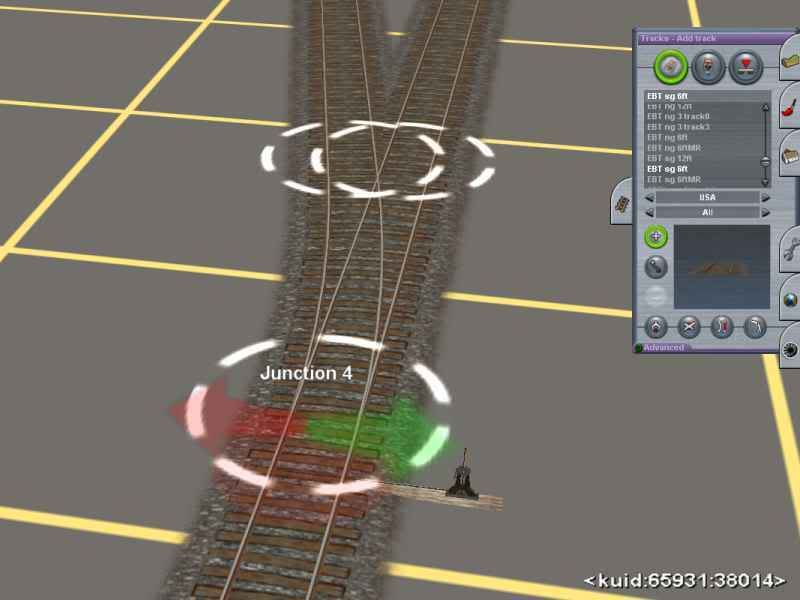I'm a newbie when it comes to railroads but I assume by Yard Ladder people mean the set of diverging junctions that lead from mainline to various parallel sidings in a yard.
I've found a very simple and quick way to easily make good looking and symmetrical ladder. This will look very straight so it might not be exactly what you are looking for but it can be useful in other instances..
Let us assume we have one-track mainline and a 4 track yard. What you want to do is extend the yard tracks by a good deal, basically all of this extension will be removed completely on the furthermost (from the main line) track, and less of it as you get closer to mainline.
What you do then is you run a single track, at an angle, across all the sidings and the mainline, make sure the track doesn't actually connect to any of the existing tracks. Once you have finished this, use the straighten track tool on all existing track work.
At this point it gets silly. What you want to do is to connect your siding tracks with the crossing track (the one that runs at an angle) at the crossing points as if you were adding a single slip. Because this is not a slip, choose any radius as long as it looks fairly normal. Once this is added, make sure to straighten up any track that was bent by the addition of two turnouts, then repeat. When finished with all the sidings, delete any extruding track parts then make sure to check for bends that make it look bad. Remember to straighten track after each slip is made or else you will end up with a long s curved entry track.
I realize that this highly perfect and straight track is not exactly prototypical to many real railways but its common enough specially in tightly packed storage yards. Also this method is great for making big double-slip splits in middle of yard track, again it seems this is something not done in America but in Europe.
Step 1

Step2: Connect parallel track with the angled one:

Step 3: Straighten the bent track using Straighten Track tool (note the tracks are straight now, and the curve is smooth):

Step4: Delete excess track:

Step5: Repeat with other connections; notice that you get a second point switch, which we will need to remove later:

Step6: Remove any excess track, and the switch points that become red (no track diverging track connected):

Step 7: Finished product:

I've found a very simple and quick way to easily make good looking and symmetrical ladder. This will look very straight so it might not be exactly what you are looking for but it can be useful in other instances..
Let us assume we have one-track mainline and a 4 track yard. What you want to do is extend the yard tracks by a good deal, basically all of this extension will be removed completely on the furthermost (from the main line) track, and less of it as you get closer to mainline.
What you do then is you run a single track, at an angle, across all the sidings and the mainline, make sure the track doesn't actually connect to any of the existing tracks. Once you have finished this, use the straighten track tool on all existing track work.
At this point it gets silly. What you want to do is to connect your siding tracks with the crossing track (the one that runs at an angle) at the crossing points as if you were adding a single slip. Because this is not a slip, choose any radius as long as it looks fairly normal. Once this is added, make sure to straighten up any track that was bent by the addition of two turnouts, then repeat. When finished with all the sidings, delete any extruding track parts then make sure to check for bends that make it look bad. Remember to straighten track after each slip is made or else you will end up with a long s curved entry track.
I realize that this highly perfect and straight track is not exactly prototypical to many real railways but its common enough specially in tightly packed storage yards. Also this method is great for making big double-slip splits in middle of yard track, again it seems this is something not done in America but in Europe.
Step 1

Step2: Connect parallel track with the angled one:

Step 3: Straighten the bent track using Straighten Track tool (note the tracks are straight now, and the curve is smooth):

Step4: Delete excess track:

Step5: Repeat with other connections; notice that you get a second point switch, which we will need to remove later:

Step6: Remove any excess track, and the switch points that become red (no track diverging track connected):

Step 7: Finished product:

Last edited:








